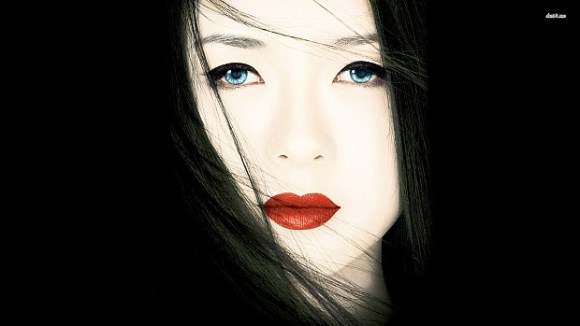
If asked which traditional Japanese arts are female-only, the first thing that comes to mind for most foreigners is probably geisha. Following that, most people might guess tea ceremony, ikebana (flower arrangement) or calligraphy. But tea ceremony and ikebana had connections to Buddhism and were started in Japan by Buddhist priests. Still today many masters in these two disciplines are men. Calligraphy was brought over from China and both men and women practiced by copying Chinese letters. Only later did Japan develop its own form of calligraphy which is still practiced today by both sexes.
In this article, we introduce five strictly female Japanese arts, a couple of which you may have never heard of before. In addition to everyone’s favorite, the geisha, we introduce the world’s only all-female revue, naginata swords for women, itako female fortune-tellers and the mysterious naked sea nymphs: the ama pearl divers.
1. Geisha 芸者
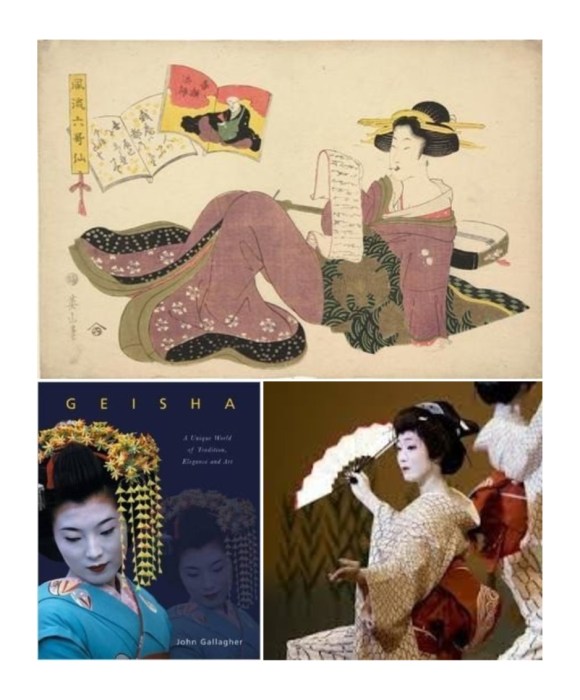
Japan’s geisha hardly need an introduction, as they are plastered on book covers, postcards and souvenirs everywhere. These skilled entertainers which can still be found in Kyoto’s Gion district and outside of Tokyo in Atami, are educated and refined in the Japanese arts of dance, music, games and conversation. Unfortunately, the chance to see these performing artists is rare these days as they command a high price and most people cannot afford to be in their company. There are, however, special deals for tourists that make the geisha more accessible since the exclusive world of these entertainers requires an introduction and other stipulations.
“Geishas are not submissive and subservient,”according to Iwasaki Mineko, in her book Geisha, A Life, “but in fact they are some of the most financially and emotionally successful and strongest women in Japan, and traditionally have been so.”
This all-female musical performance and theater was created in 1913 in the form of the Takarazuka Music School, its aim of which was to offer an alternative to kabuki theater. The president of Hankyu Railways, Ichizo Kobayashi, was trying to bring in more business to Takarazuka, the city at the end of the train line.
The Takarazuka Revue Company is the only performance troupe in the world where all the performers are women. Women playing men’s parts, called itokoyaku, is the very appeal of Takarazuka. The Takarazuka Revue website explains it thus:
“The male roles are able to be portrayed so well and with so much affection specifically because they are portrayed by women, fascinating and charming the female audience. This is because they are played by those who know a woman’s feelings best. It can be said that this is what holds women captive to the beautiful and graceful world born in the Takarazuka.”
Lesbian overtones and feminine eroticism are said to be elements that attract the mostly female audience to Takarazuka.
3. Naginatajutsu 長刀術
Naginata is a type of sword that is slightly hooked on the end and has a long handle. It was originally used by male warriors and proved popular in the era of cavalry, as the shape and length of the naginata made it convenient for unseating opponents on horseback. But during the Edo period, the naginata fell out of favor as more modern weapons came along and this unique sword became a self-defense weapon for samurai wives who needed to be able protect themselves when their husbands were away. The naginata became a status symbol for women and was even included in dowries of samurai daughters. The long-handled weapon allowed women to keep an attacker at a distance so he could not overpower her. Although the martial art of naginatajutsu is taught to girls in public schools in Japan, and is performed as a sport by women in university, overseas it is performed by both men and women. In addition to competition, it is practiced in the form of kata, prearranged choreographed forms that focus on the preciseness, speed and strength of the art.
4. Itako Fortune-Tellers 巫子
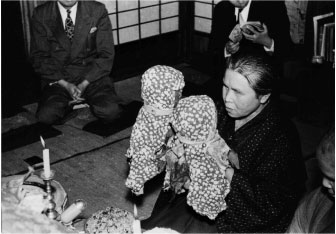
The traditionally blind, female folk shamans of Aomori Prefecture’s Tsugaru and Nanbu districts, itako are able to talk to the dead by acting as a medium between the living, the gods, and the deceased. These mystics employ a technique called kuchiyose which means to call down the spirits of the dead, and they perform at funerals or on the anniversary of someone’s death. Itako are also sought out at other times as well, such as when families want to communicate information to loved ones who have passed away. Likewise, the living may receive advice from the dead who may wish to warn of specific events or misfortune that can be avoided. These diviners (also sometimes called gomiso) use chanting, songs, and bells to help them convene with the spirits.
In addition to Aomori Prefecture, the itako also populated the central and the northern part of Iwate Prefecture. However, these days, the fortune tellers are most famous for their presence on Mount Osore, a mountain in Aomori Prefecture that is shrouded in mystery and ghosts. There is an annual festival held on Mount Osore every July which attracts itako from all over the region.
5. Ama Pearl Divers 海人
Most people have heard of Japan’s iconic pearl divers. They experienced a recent wave of popularity as the subject of an NHK TV drama called Ama-chan in 2013 and more recently, we told you about a town in Mie Prefecture asking for help naming their pearl diver mascot.
Mikimoto Pearls, famous worldwide for their pearl jewelry, has historically used ama divers to cultivate pearls. Their website explains:
“Thought to have been around for over 2000 years, Ama – meaning ‘sea women’ – were traditional free divers who made their living diving to depths of up to 25 meters without using any breathing apparatus – instead relying on solely their skills and special breathing techniques.
The role of the Mikimoto ama was to collect the oysters from the seabed so that the pearl-producing nucleus may be inserted. Once this critical process was completed, the ama then carefully returned the oysters to the seabed – In order to successfully complete this process, each diver would have to hold her breath for up to two minutes at a time in often freezing cold waters.”
While such divers were taken out to deeper water via boats from which they were tethered to a long rope before jumping in, another form of diving was by using a wooden barrel and entering the waters close to shore.
Women entered shallower waters from the beach. The floating barrels had two purposes: to grab onto for a rest between dives, and to put shells into.
Because this was often performed in very cold temperatures, after coming out of the water, the ama divers would change into dry clothes and make a fire on the beach to warm up. These days, however, modern technology has replaced Japan’s iconic divers, although they still perform for tourists.
On that note, we leave you with this intriguing video of ama pearl divers of yore, diving bare-breasted because they move through the water so much more easily. They’re the closest things to real mermaids you’re likely to ever see.
Feature image via Wikipedia

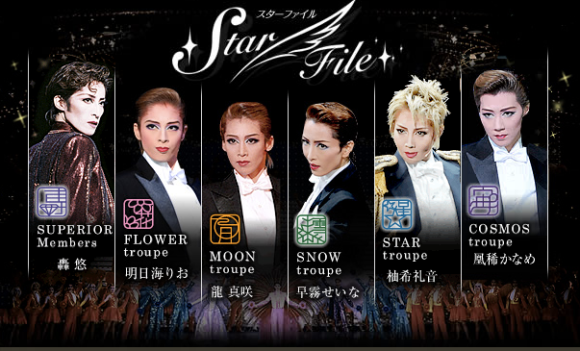
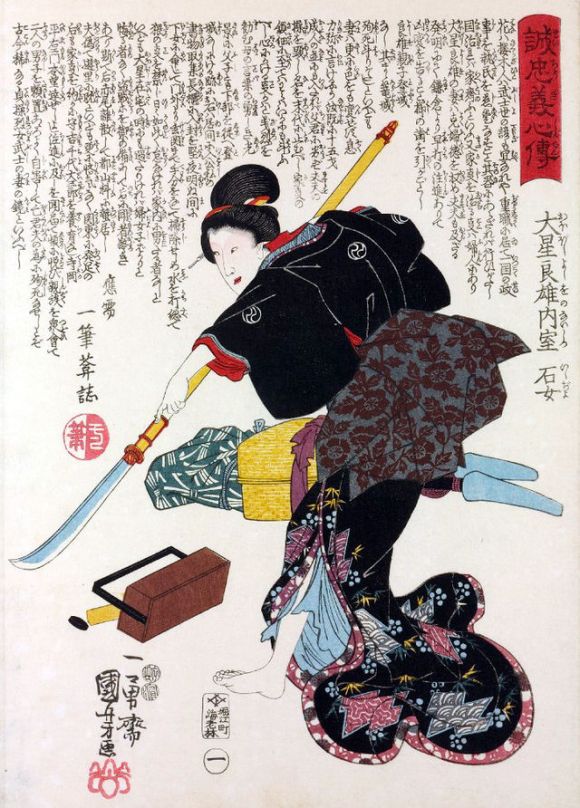
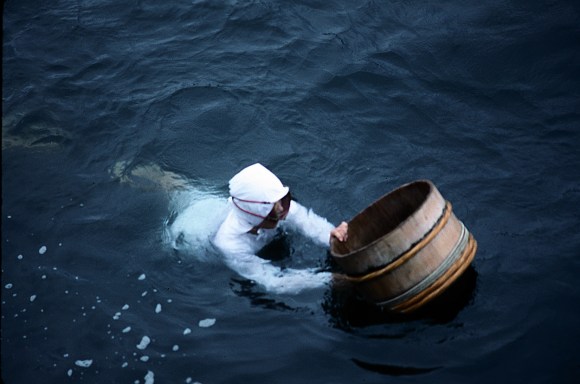
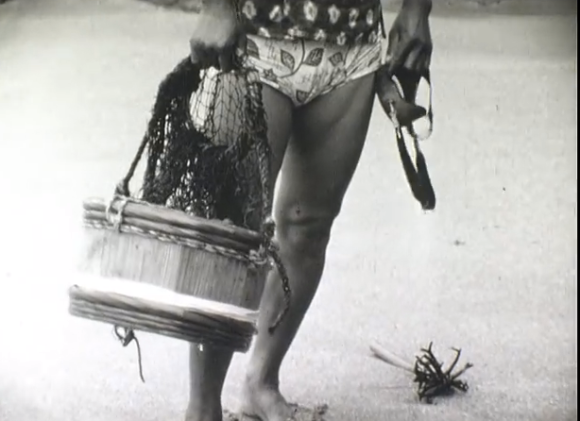
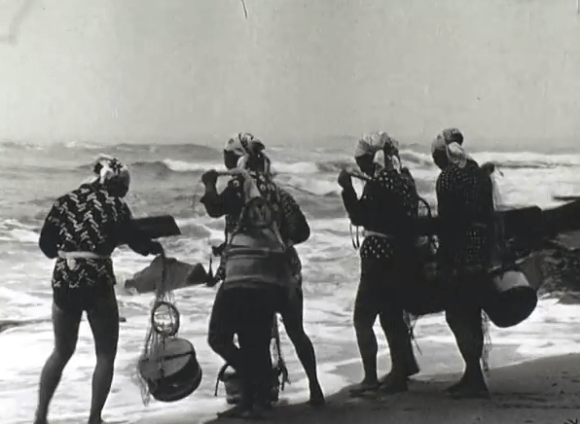
 Japan’s all-female Takarazuka theater has enlightened 31.5:1 female to male bathroom stall ratio
Japan’s all-female Takarazuka theater has enlightened 31.5:1 female to male bathroom stall ratio All-female Final Fantasy musical stage play coming from Japan’s Takarazuka troupe
All-female Final Fantasy musical stage play coming from Japan’s Takarazuka troupe Four things women are banned from doing in Japan【Women in Japan Series】
Four things women are banned from doing in Japan【Women in Japan Series】 10 things you didn’t know about geisha
10 things you didn’t know about geisha McDonald’s new Happy Meals offer up cute and practical Sanrio lifestyle goods
McDonald’s new Happy Meals offer up cute and practical Sanrio lifestyle goods All-you-can-drink Starbucks and amazing views part of Tokyo’s new 170 meter-high sky lounge
All-you-can-drink Starbucks and amazing views part of Tokyo’s new 170 meter-high sky lounge McDonald’s Japan releases a pancake pie for new retro kissaten coffeeshop series
McDonald’s Japan releases a pancake pie for new retro kissaten coffeeshop series Super Nintendo World expansion gets delayed for several months at Universal Studios Japan
Super Nintendo World expansion gets delayed for several months at Universal Studios Japan Studio Ghibli releases new action figures featuring Nausicaä of the Valley of the Wind characters
Studio Ghibli releases new action figures featuring Nausicaä of the Valley of the Wind characters Studio Ghibli glasses cases let anime characters keep an eye on your spectacles
Studio Ghibli glasses cases let anime characters keep an eye on your spectacles McDonald’s creates a dream Japanese bento for April Fools’ Day
McDonald’s creates a dream Japanese bento for April Fools’ Day Pocky x Street Fighter II collaboration comes with a special game for a limited time
Pocky x Street Fighter II collaboration comes with a special game for a limited time Tokyo has a cafe lounge that’s for negative people only
Tokyo has a cafe lounge that’s for negative people only Yume Nikki, one of Japan’s most popular and disturbing indie games, is getting a full 3-D sequel
Yume Nikki, one of Japan’s most popular and disturbing indie games, is getting a full 3-D sequel Disney princesses get official manga makeovers for Manga Princess Cafe opening in Tokyo
Disney princesses get official manga makeovers for Manga Princess Cafe opening in Tokyo More foreign tourists than ever before in history visited Japan last month
More foreign tourists than ever before in history visited Japan last month Starbucks reopens at Shibuya Scramble Crossing with new look and design concept
Starbucks reopens at Shibuya Scramble Crossing with new look and design concept Beautiful new Final Fantasy T-shirt collection on the way from Uniqlo【Photos】
Beautiful new Final Fantasy T-shirt collection on the way from Uniqlo【Photos】 Is the new Shinkansen Train Desk ticket worth it?
Is the new Shinkansen Train Desk ticket worth it? Foreign English teachers in Japan pick their favorite Japanese-language phrases【Survey】
Foreign English teachers in Japan pick their favorite Japanese-language phrases【Survey】 Japanese convenience store packs a whole bento into an onigiri rice ball
Japanese convenience store packs a whole bento into an onigiri rice ball We try out “Chan Ramen”, an underground type of ramen popular in the ramen community
We try out “Chan Ramen”, an underground type of ramen popular in the ramen community Studio Ghibli releases Kiki’s Delivery Service chocolate cake pouches in Japan
Studio Ghibli releases Kiki’s Delivery Service chocolate cake pouches in Japan Japan’s bone-breaking and record-breaking roller coaster is permanently shutting down
Japan’s bone-breaking and record-breaking roller coaster is permanently shutting down New definition of “Japanese whiskey” goes into effect to prevent fakes from fooling overseas buyers
New definition of “Japanese whiskey” goes into effect to prevent fakes from fooling overseas buyers Our Japanese reporter visits Costco in the U.S., finds super American and very Japanese things
Our Japanese reporter visits Costco in the U.S., finds super American and very Japanese things Studio Ghibli unveils Mother’s Day gift set that captures the love in My Neighbour Totoro
Studio Ghibli unveils Mother’s Day gift set that captures the love in My Neighbour Totoro Foreign passenger shoves conductor on one of the last full runs for Japan’s Thunderbird train
Foreign passenger shoves conductor on one of the last full runs for Japan’s Thunderbird train Domino’s Japan now sells…pizza ears?
Domino’s Japan now sells…pizza ears? New Japanese KitKat flavour stars Sanrio characters, including Hello Kitty
New Japanese KitKat flavour stars Sanrio characters, including Hello Kitty Kyoto creates new for-tourist buses to address overtourism with higher prices, faster rides
Kyoto creates new for-tourist buses to address overtourism with higher prices, faster rides Sales of Japan’s most convenient train ticket/shopping payment cards suspended indefinitely
Sales of Japan’s most convenient train ticket/shopping payment cards suspended indefinitely Sold-out Studio Ghibli desktop humidifiers are back so Totoro can help you through the dry season
Sold-out Studio Ghibli desktop humidifiers are back so Totoro can help you through the dry season Japanese government to make first change to romanization spelling rules since the 1950s
Japanese government to make first change to romanization spelling rules since the 1950s Ghibli founders Toshio Suzuki and Hayao Miyazaki contribute to Japanese whisky Totoro label design
Ghibli founders Toshio Suzuki and Hayao Miyazaki contribute to Japanese whisky Totoro label design Doraemon found buried at sea as scene from 1993 anime becomes real life【Photos】
Doraemon found buried at sea as scene from 1993 anime becomes real life【Photos】 Tokyo’s most famous Starbucks is closed
Tokyo’s most famous Starbucks is closed One Piece characters’ nationalities revealed, but fans have mixed opinions
One Piece characters’ nationalities revealed, but fans have mixed opinions We asked a Uniqlo employee what four things we should buy and their suggestions didn’t disappoint
We asked a Uniqlo employee what four things we should buy and their suggestions didn’t disappoint Princesses, fruits, and blacksmiths: Study reveals the 30 most unusual family names in Japan
Princesses, fruits, and blacksmiths: Study reveals the 30 most unusual family names in Japan Takarazuka, Japan’s all-woman theater troupe, is producing a musical about Abe Lincoln
Takarazuka, Japan’s all-woman theater troupe, is producing a musical about Abe Lincoln Our reporter breaks her Takarazuka virginity with an all-female performance of City Hunter
Our reporter breaks her Takarazuka virginity with an all-female performance of City Hunter Chinese diving duo makes a splash online with an unusual stunt dive
Chinese diving duo makes a splash online with an unusual stunt dive 8 Japan-related events to look forward to in 2016!
8 Japan-related events to look forward to in 2016! Rurouni Kenshin comes to picture-perfect life as photos of stage musical’s cast are released
Rurouni Kenshin comes to picture-perfect life as photos of stage musical’s cast are released Drink with a Japanese geisha at an online drinking party
Drink with a Japanese geisha at an online drinking party You can’t miss this amazing footage of a diver swimming in harmony with a giant whale shark
You can’t miss this amazing footage of a diver swimming in harmony with a giant whale shark The Ozashiki Cafe — Japanese restaurant offers chance to spend time with real-life geisha!
The Ozashiki Cafe — Japanese restaurant offers chance to spend time with real-life geisha! People in Japan are being paid to have babies, and it seems to be working
People in Japan are being paid to have babies, and it seems to be working Hello, Underwater Kitty!? This limited edition Kitty-chan diving suit is all kinds of cute
Hello, Underwater Kitty!? This limited edition Kitty-chan diving suit is all kinds of cute Tokyo Olympics comes to a close with anime opening ska remix at closing ceremony 【Video】
Tokyo Olympics comes to a close with anime opening ska remix at closing ceremony 【Video】 Love oysters? You can now wear them in style — as a shoulder bag!
Love oysters? You can now wear them in style — as a shoulder bag! World’s first official store dedicated to anime icon Doraemon will open in Tokyo for 2019
World’s first official store dedicated to anime icon Doraemon will open in Tokyo for 2019 Vending machines in Japan are now selling disposable diapers
Vending machines in Japan are now selling disposable diapers
Leave a Reply